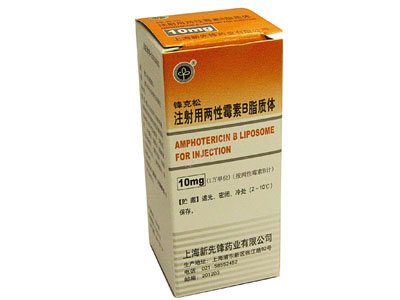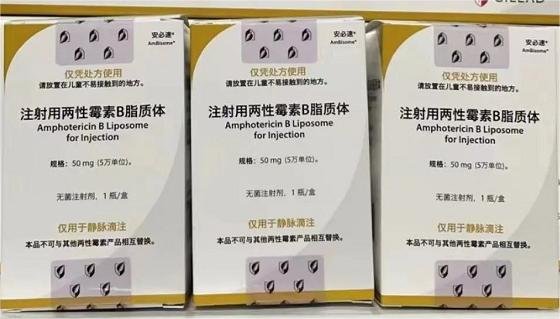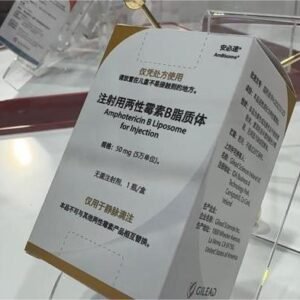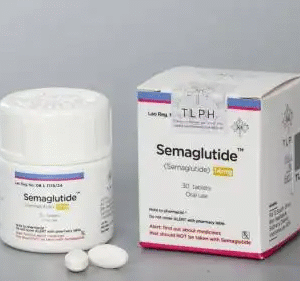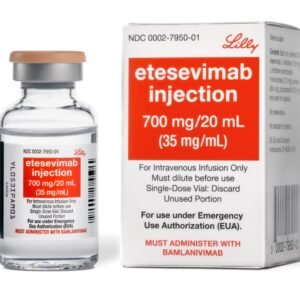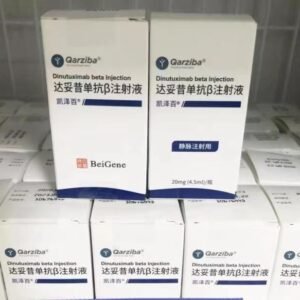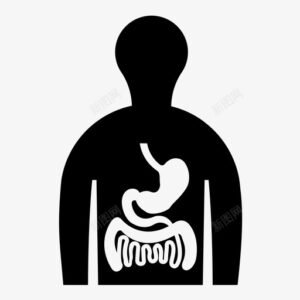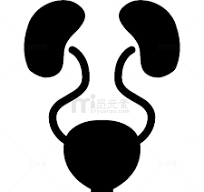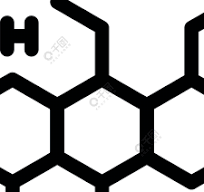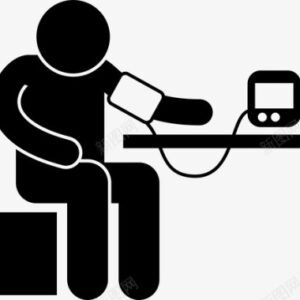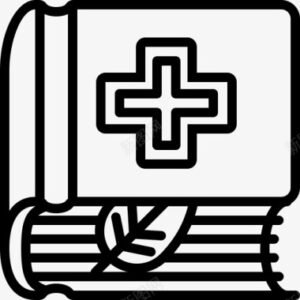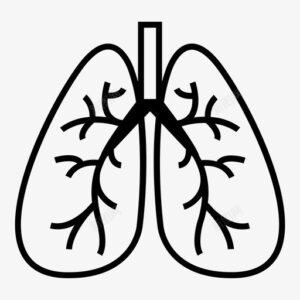Amphotericin B Liposome for Injection
Function and indication:
Suitable for patients with systemic fungal infection; patients whose condition is progressive or who are ineffective with other antifungal drugs, such as sepsis, endocarditis, meningitis (cryptococcus and other fungi), abdominal infection (including those related to dialysis), lung infection, urinary tract infection, etc.; patients who cannot use effective doses of amphotericin B due to renal damage or drug toxicity.
Adverse reactions:
1. Adverse reactions found in clinical trials of this product: A randomized controlled clinical trial of this product was conducted in 114 patients. The dosage of this product was within the range of 1-3 mg/kg/day, and the control prescription was ordinary amphotericin B, with the same dosage. The incidence of adverse reactions of this product was observed to be 60.0%, and 83.9%/ in the control group. The observed adverse reactions include: numbness of the tip of the tongue, chills, fever, headache, general malaise, joint pain, hypokalemia, nausea, vomiting, abdominal distension and pain, abnormal liver and kidney function, hematuria, hair loss, rash, increased blood sugar, chest tightness, palpitations, tinnitus and vasculitis, etc. Most of them are mild to moderate reactions and can be tolerated after symptomatic treatment. Because no adequate comparative clinical trials have been conducted, the difference between this drug and ordinary amphotericin B cannot be clearly identified and further observation is required after it is marketed. 2. Adverse reactions that have occurred during the use of ordinary amphotericin B include: (1) Chills, high fever, severe headache, loss of appetite, nausea, vomiting during or after intravenous infusion, and sometimes a drop in blood pressure and dizziness. (2) Almost all patients may experience varying degrees of renal impairment during the course of treatment. Red blood cells, white blood cells, protein and casts may appear in the urine, blood urea nitrogen and creatinine may increase, creatinine clearance may decrease, and renal tubular acidosis may also occur. (3) Hypokalemia, caused by the excretion of a large amount of potassium ions in the urine. (4) Toxicity reactions of the blood system include normal red blood cell anemia and occasionally leukopenia or thrombocytopenia. (5) Hepatotoxicity is less common and can cause liver cell necrosis and acute liver failure. (6) Cardiovascular system reactions such as excessive intravenous infusion can cause ventricular fibrillation or cardiac arrest. In addition, electrolyte disturbances caused by this product can also lead to arrhythmias. Thrombophlebitis is prone to occur when this product is administered intravenously. 2O9 states that (7) Toxicity of the nervous system Intrathecal injection of this product causes severe headache, fever, vomiting, stiff neck, lower limb pain and urinary retention, etc. In severe cases, lower limb paraplegia may occur. (8) Allergic reactions such as anaphylactic shock and rash occasionally occur. 3. Other adverse reactions observed in foreign clinical studies include: (1) Systemic reactions: weakness, back pain, infusion reactions, infection, sepsis. (2) Cardiovascular system: hypertension, hypotension, tachycardia. (3) Digestive system: gastrointestinal bleeding, constipation. (4) Metabolic disorders: elevated alkaline phosphatase, bilirubinemia, hyperglycemia, hypernatremia, hypervolemia, edema, hypercalcemia, hyperkalemia, hypomagnesemia. (5) Nervous and mental systems: anxiety, confusion, headache, insomnia, dizziness. (6) Respiratory system: cough, dyspnea, hypoxia, epistaxis, rhinitis, pleural effusion, lung disease. (7) Rash, itching, sweating. (8) Hematuria.
Contraindications:
This product is contraindicated in patients who are allergic to it or have severe liver disease.
Share:
Products
Our offers
Health Classification
Let us work together to protect precious health



